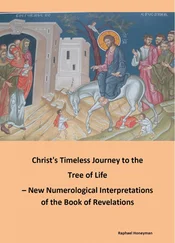Robert Morant, a young civil servant of the type it is doubtful that the service could tolerate today, believed Britain faced ‘an educational emergency’ and determined to sort out the ragged patchwork of provision. He was another friend of the Webbs and another product of Toynbee Hall. A former tutor to the royal princes of Siam, he became known in Whitehall as a ‘magnificent hustler’. The difficulty was how to get his political masters to act. On Boxing Day 1898 he quietly slipped into his office for a clandestine meeting to persuade a London County Council official to bring a test case over whether school boards could legally fund secondary education under the 1870 Act. 19The auditor ruled they could not: it was unlawful for a school board to fund anything other than elementary education. Politically, however, the demand for secondary education was such that it could not be halted. So by this conspiratorial sleight of hand Morant, of whom it was said, ‘he was not unprincipled but he was unscrupulous’, 20got what he wanted – reform.
Arthur Balfour’s 1902 Education Act created a Board of Education to replace the sub-committee of the Privy Council through which since 1833 money had been channelled to education, and a government minister was appointed as its President. The 2500 elected school boards were amalgamated into local education authorities which in turn became a full part of local government. They were given powers to fund education ‘other than elementary’. Secondary and technical education could thus be provided, along with teacher training colleges. But the Act also ended central government grants to both the state and voluntary schools. The church schools would now receive their grants for current spending (they were to be entirely responsible for their own capital spending) from local government in return for one-third of the seats on their governing bodies.
The result was another explosion of sectarian religious feeling. There were bitter and opposing protests about ‘Rome’ and ‘Canterbury’ ‘on the Rates’, while some Nonconformists went wild. In Wales they threatened passive resistance and withheld their rates. 21The Liberals exploited these divisions with ‘splenetic fury’ as a means of uniting their own supporters and the issue contributed to the Liberal landslide victory over the Tories in 1906. It was the election that first made Winston Churchill a minister and was a lesson he would never forget. The Act, however, produced ‘a surge forward in secondary education comparable with that in elementary education after 1870’. External examinations were developed. County and county borough secondary schools grew apace along with the independent grammar schools, many of which became direct grant schools after 1907 when grants from the Board of Education were offered in return for a quota of 25 per cent free places.
In 1916, Lloyd George sent the European historian H. A. L. Fisher to Education and the 1918 Education Act finally abolished fees in elementary schools, raised the school leaving age to fourteen, and ensured that not less than half the cost of education was met from central government funds. Legislation allowing twelve- to fourteen-year-olds to work part-time in factories was repealed. Much of the education up to fourteen, however, was still in elementary schools, not in the secondaries or grammars. And Fisher’s grander vision – allowing, but not compelling, local authorities to develop nursery schools and ‘day-continuation schools’ in which fourteen- to sixteen-year-olds would spend eight hours a week for forty weeks of the year – largely fell to the Geddes axe of 1922 which cut educational spending by about one-third. The mid-1930s economic crisis saw free scholarships to the selective secondary schools replaced by means-tested ‘special places’, although popularly these remained known as scholarships. While provision over the two decades did indeed grow, and various brave attempts to alter the shape of education were made, the effect of the economic blizzards was ‘to freeze the educational pattern for much of the inter-war years’. 22
Education, as Butler inherited it, looked broadly like this. Schooling up to fourteen was compulsory and free, with the great bulk of pupils staying in elementary or ‘all age’ schools until they left at fourteen (although many of the schools had developed junior and senior sections). Some stayed in the ‘all age’ schools until eighteen. In 1938, the last year for which there are pre-war statistics, 88 per cent of all pupils were in such schools. 23A small group of brighter children, selected by examination at eleven, went on ‘special place’ scholarships to local authority secondary schools, many of which had been modelled on the independent grammars. Overall, just under half of their places (45 per cent) were free, the remainder being taken up by fee-payers arriving at ages between eleven and fourteen. The proportions in individual secondary schools varied enormously, however.
Independent of the local authority maintained sector were the public schools and the old endowed grammar schools; many of the latter now being direct grant schools, receiving financial help from the Board of Education in return for a proportion of free places. A variety of other types of assisted school also existed including commercial, trade, nautical and junior technical schools, and the ‘central’ schools, a mix of selective and non-selective municipal schools for eleven- to fifteen-year-olds. Private tutoring still flourished.
Very broadly – and it can only be very broadly – elementary schools catered for the working class up to the age of fourteen, a small proportion of these children escaping on scholarships into secondary education. Fees tended to exclude the working class who did not win scholarships. The secondaries mainly absorbed the lower middle-class children who stayed on either through scholarships or because their parents could pay, while the middle class and above could afford the independent grammars and public schools if their children did not win free places. Schooling reflected the gradations of society. The view of the Schools Inquiry Commission of 1868 that’… the different classes of society, the different occupations of life, require different teaching’ 24could still be seen in practice.
What all this meant has been chronicled by Corelli Barnett – ‘that tireless enumerator of Establishment failings’, in Peter Hennessy’s phrase 25– and by Brian Simon, the equally tireless educational historian. The vast majority of children left school at fourteen with no formal qualifications, exam passes or failures, of any kind. They ‘were pushed off the plank straight into the job market’. 26Of roughly 3.5 million children aged between thirteen and eighteen, only 470,000 or one in seven were in maintained schools, the great bulk of these leaving at sixteen. In 1938 a mere 19,000 stayed on until they were eighteen. Of these ‘only 8000 emerged with the Higher School Certificate, the potential passport to university or other higher education’ and just over half those actually got to university. 27This ‘half-cock’ education system, in Barnett’s phrase, most neglected the talent of working-class children, for all too few of them hurdled the obstacles into secondary education and then on to university. 28
Of the 50,000 students in universities, just over half had started life in elementary schools. But overall it was calculated that one in 150 of the children in elementary schools reached university, against one in twenty for secondary schools and one in eight for the public schools. 29Not only was class structure vividly reflected in British education, the nation’s overall educational record had slipped against its competitors. In the mid-1930s, even if Scotland and Wales did much better, England had only one student at university for every 1000 of the population. In Germany the figure was 1:604, in France 1:480 and in the United States 1:125. 30In addition, British university education remained heavily arts-dominated. Imperial in London was the only science and technology based college, and science and technology courses accounted for only 25 per cent of university students. 31There were 149 technical colleges, but their full-time as opposed to part-time tally was only 9000 students. Of nearly three million fourteen- to eighteen- year-olds who had left school only one in twenty-five was on even a part-time course. 32
Читать дальше
![Nicholas Timmins The Five Giants [New Edition]: A Biography of the Welfare State обложка книги](/books/701739/nicholas-timmins-the-five-giants-new-edition-a-cover.webp)











